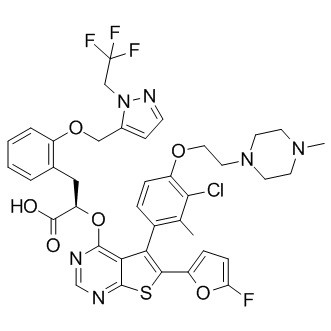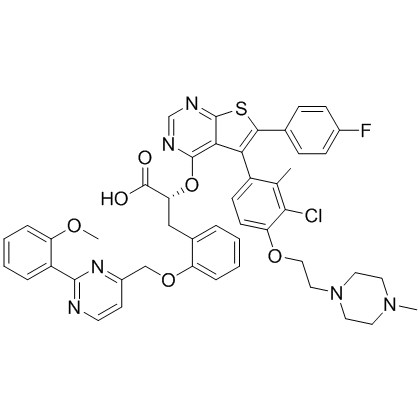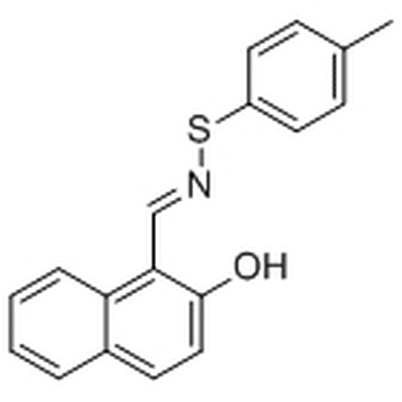What are the educational applications of S64315?
Leave a message
As a supplier of S64315, I am excited to delve into the educational applications of this remarkable compound. S64315 is a potent and selective inhibitor of MCL - 1, a member of the BCL - 2 family of proteins that plays a crucial role in regulating apoptosis, or programmed cell death. In the field of education, S64315 can serve as an invaluable tool for both theoretical and practical learning experiences.
1. Understanding Apoptosis Mechanisms
Apoptosis is a fundamental biological process that is essential for normal development, tissue homeostasis, and the elimination of damaged or infected cells. Dysregulation of apoptosis is associated with various diseases, including cancer, neurodegenerative disorders, and autoimmune diseases. S64315 can be used in educational settings to teach students about the molecular mechanisms of apoptosis.
In a classroom or laboratory environment, students can study how S64315 specifically binds to MCL - 1 and disrupts its interaction with pro - apoptotic proteins such as BIM. This binding prevents MCL - 1 from sequestering BIM, allowing BIM to activate the mitochondrial pathway of apoptosis. By observing the effects of S64315 on cell lines in cell culture experiments, students can gain a hands - on understanding of how apoptosis is initiated and regulated at the molecular level.
For example, students can perform experiments where they treat cancer cell lines with different concentrations of S64315 and then analyze the changes in cell viability, caspase activation, and mitochondrial membrane potential. These experiments can be accompanied by lectures on the BCL - 2 family of proteins, the role of MCL - 1 in apoptosis, and the potential therapeutic applications of MCL - 1 inhibitors like S64315.
2. Cancer Biology Education
Cancer is a complex disease characterized by uncontrolled cell growth and the evasion of apoptosis. S64315 can be a powerful educational tool in cancer biology courses. It can help students understand the role of MCL - 1 in cancer cell survival and the potential of MCL - 1 inhibitors as anti - cancer agents.
Many cancer cells overexpress MCL - 1, which allows them to resist apoptosis and continue to proliferate. By using S64315 in experiments, students can observe how inhibiting MCL - 1 can induce apoptosis in cancer cells. This can lead to discussions about the development of targeted cancer therapies and the challenges associated with treating cancers that are dependent on MCL - 1 for survival.
In addition, comparing S64315 with other apoptosis - related compounds such as MIK665 CAS No.: 1799631 - 75 - 6 and FSEN1 CAS No.: 862808 - 01 - 3 can provide students with a broader understanding of the different strategies for targeting the apoptosis pathway in cancer treatment. For instance, students can compare the potency, selectivity, and mechanism of action of these compounds in cell - based assays.


3. Drug Discovery and Development Education
The process of drug discovery and development is a multi - step and complex process. S64315 can be used in educational programs related to pharmacology and drug discovery to teach students about the different stages of drug development, from target identification to clinical trials.
In the target identification phase, students can learn how MCL - 1 was identified as a potential drug target based on its role in apoptosis and cancer. They can then study how S64315 was designed and developed to specifically target MCL - 1. This can involve discussions about structure - based drug design, high - throughput screening, and lead optimization.
In pre - clinical studies, students can analyze the data from in vitro and in vivo experiments using S64315. They can learn how to evaluate the efficacy, safety, and pharmacokinetic properties of the compound. For example, they can study how S64315 is absorbed, distributed, metabolized, and excreted in the body and how these properties affect its potential as a therapeutic agent.
Furthermore, students can also explore the challenges and ethical considerations in drug development, such as the need for animal testing and the importance of clinical trials to ensure the safety and effectiveness of new drugs. Comparing S64315 with other well - known apoptosis - targeting drugs like S63845 CAS No.:1799633 - 27 - 4 can provide insights into the competitive landscape of drug discovery in the field of apoptosis research.
4. Research Skills Training
Working with S64315 in an educational laboratory setting can also provide students with valuable research skills training. Students can learn how to handle and store the compound safely, prepare solutions of different concentrations, and perform cell culture experiments. They can also develop skills in data collection, analysis, and interpretation.
For example, students need to learn how to use various laboratory techniques such as microscopy, flow cytometry, and Western blotting to analyze the effects of S64315 on cells. They can then use software tools to analyze the data obtained from these experiments, such as GraphPad Prism for statistical analysis and ImageJ for image processing.
In addition, students can learn how to write scientific reports and present their findings in a clear and concise manner. This can include writing up the experimental procedures, results, and conclusions of their S64315 - related experiments, as well as presenting their work in oral presentations or poster sessions.
5. Interdisciplinary Learning
The study of S64315 also offers opportunities for interdisciplinary learning. It combines aspects of biology, chemistry, pharmacology, and medicine. In an educational context, students from different disciplines can collaborate on projects related to S64315.
For example, chemistry students can be involved in synthesizing analogs of S64315 to study structure - activity relationships. Biology students can perform cell - based assays to evaluate the biological activity of these analogs. Pharmacology students can study the pharmacokinetic and pharmacodynamic properties of the new compounds. And medical students can discuss the potential clinical applications of these compounds in treating diseases.
This interdisciplinary approach can help students develop a more comprehensive understanding of the field of apoptosis research and the potential of small - molecule inhibitors like S64315 in medicine.
Contact for Procurement
If you are an educational institution, a research laboratory, or a company interested in procuring S64315 for educational or research purposes, please feel free to contact us. We are committed to providing high - quality S64315 products and excellent customer service. Our team of experts can also offer technical support and advice on the use of S64315 in your educational or research projects.
References
- Czabotar PE, Lessene G, Strasser A, Adams JM. Control of apoptosis by the BCL - 2 protein family: implications for physiology and therapy. Nat Rev Mol Cell Biol. 2014;15(1):49 - 63.
- Kotschy A, Lessene G, Czabotar PE, et al. A selective MCL - 1 inhibitor potently induces apoptosis in acute myeloid leukemia. Nat Med. 2016;22(7):777 - 785.
- Del Gaizo Moore V, Letai A. Targeting the BCL - 2 family for cancer therapy. Cold Spring Harb Perspect Med. 2013;3(11):a008754.





